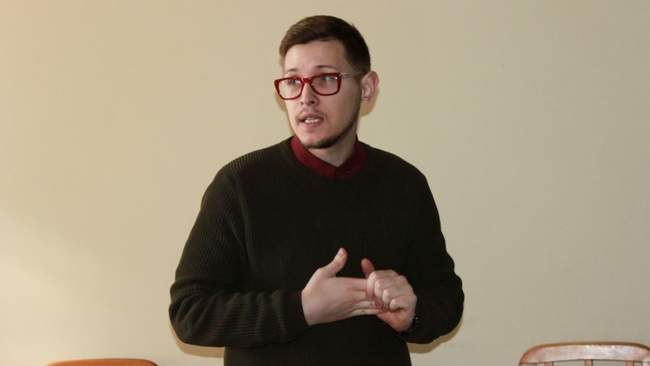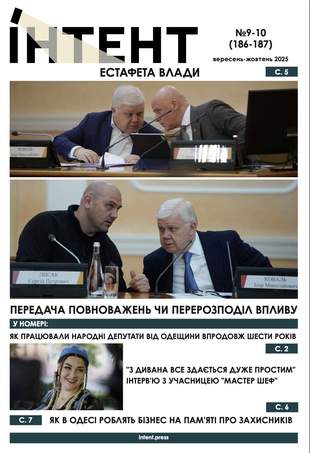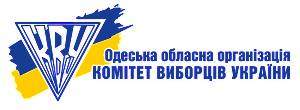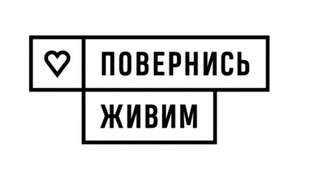Меню
Social networks
Sections
Feb. 19, 2025, 4:36 p.m.
Debunking Myths: The Truth About Kyivan Rus and the Rurik Dynasty
Цей матеріал також доступний українською216

Photo: Vadym Chipizhenko/Facebook
On January 24, the M. Hrushevsky Odesa Regional Universal Scientific Library hosted a lecture by Vadym Chepizhenko, PhD in History, Associate Professor of the Department of Archeology, Ethnology and World History, Head of the Center for Antiquities and Medieval Studies at the I. Mechnikov ONU. During the event, the audience learned why terms such as "Kyivan Rus" or "Rus-Ukraine," the name "Rusychs" for its population, and the Rurik dynasty may be incorrect or inaccurate. Watch the full version and read a short version on Intent.
Watch the lecture in full
"The Tale of Bygone Years" - the problem of source reliability
There are several problems we face when working on this topic. First, the "Tale of Bygone Years" is perhaps the only source that is relied upon when studying the history of medieval Ukraine. This is far from the only source, but it is the main one. Not only sources of Ukrainian origin, but obviously there are sources of Byzantine, Western European, and Arab origin. All neighbors always write something about their neighbors, so we have evidence from medieval Ukrainian history that is not only borrowed from Ukrainian sources. But if we're talking about purely Ukrainian sources, we actually have very, very few of these sources before the Mongol period of Ukrainian history.
When you open a textbook and clearly read that the story was written in 1113 by Nestor the Chronicler, it is all fiction, in fact, manipulation. This is a certain version, perhaps, to put it kindly, that takes place, but is not actually confirmed by anything. We don't know who exactly wrote The Tale of Bygone Years. It was written by a team of authors, obviously not by one person. We do not know how many editions there were in this story.
We have come down to the lists of the "Tale of Bygone Years," which is a fairly good number, but the oldest list dates back to 1282. The rest date from the 14th to the 16th century.
There are many points related to the Tale of Bygone Years that we cannot answer. That is, it is difficult to say exactly when it was written. Where was it written? I believe for sure that the Kyiv Cave Monastery has something to do with it, because there are a lot of references to it. That the monks of the Kyiv Cave Monastery allegedly had an influence on the writing of this text, including Nestor himself, who is allegedly a monk. The historicity of Nestor's existence has also been questioned more than once, whether he existed at all. Another possibility is the name of Sylvester, who is mentioned as one of the editors, i.e., he was supposed to have written after Nestor. But in fact, we do not have a clear answer.
Confirmation of information
There is a thing that all the information we learn from sources can be conditionally divided into several groups. There is information that is subject to verification. That is, we have one source and another source that are created independently of each other and each of them confirms the same information. We read, for example, about the baptism of Volodymyr not only in the Tale of Byzantine Years, but the Byzantines also tell us this, as well as Western sources.
When we have one single source that tells us about it and no one else, not only in writing but also archaeologically. This information is unique, it cannot be confirmed by anything, and a historian can only take it on faith using the principles of so-called formal logic. Either it could have happened or it could not.
In other words, there is no reason for the author to invent, formally speaking. That is, it seems to be logical, normal information, and it does not cause any problems. From the point of view of formal logic, there were no dragons. Okay, then we don't trust this fragment, reject it, or interpret it somehow. Why did the author put a dragon in there? Perhaps he was thinking about Satan, the fight against evil, or something else.
There is a lot of unique information in The Tale of Bygone Years that is only there, and it is not confirmed by any other source. And the third group of information that we can see in the source is quotes. The Tale of Bygone Years contains a great deal of such information-direct quotes. He quotes Solomon, the Holy Scriptures. And there are quotes where he does not indicate whom he is quoting. He quotes a lot of religious texts, including other sources with which he probably worked, and we can see this by the methods of textual criticism. And it is important to find these quotes and isolate them, because very often historians, including those of the 18th and 20th centuries, write history on these quotes.
What is the problem? We have the "Tale of Bygone Years" and read what it says there. First, about the authorship. It is wrong to say that it was written by Nestor the Chronicler. It is correct to say that it was written by chroniclers from different centers, because these are again lists that have come down to us. They show that there were different centers of chronicling with different views of history: Kyiv, Novgorod, possibly Chernihiv, Pereyaslav, and so on. You even know that there are places that do not fit together. It is obvious that the author borrowed different legends from different places.
Ideological program
And the most important problem, from which everything else we will talk about will follow, is the problem of why the author wrote this.
This chronicle has two explanations. Why did those monks, perhaps from the Kyiv Cave Monastery, the Vydubychi Monastery, or some other chronicle centers, write this text? One explanation is that to a certain extent the chronicle is a political work. It is a certain ideological program. The text is written about a princely family, the main characters are Russian princes, and the chronicler positions them as descendants of Rurik. And all these princes, respectively, are sung by the chronicler as Ruriks.
It is obvious that he is writing to please the princes who are ruling at the time, glorifying the ancestors of these princes. He tells how great all these ancestors of these princes were. Indeed, there are certain moments there that are not very positive. But after the Baptism, everyone is generally very good, very cool. Volodymyr is abruptly replaced by Yaroslav, who is generally wonderful. That is, this is a certain history of Russian princes, the ancestors of those princes who existed at the time of the chroniclers. So he writes about them, about their history.
The famous idea of Moscow
What else is important. The final number of lists we have centers around the 15th century. This is when the idea of Moscow as the Third Rome, the heir to the great empires of Byzantium and the Holy Roman Empire, and even the center of the gathering of Russian lands, was formed. This is formed around the figure of Ivan III, then Vasily III, and Ivan IV.
No wonder the illustration depicts this famous monument to the millennium of Russia, erected in Veliky Novgorod or Novgorod on the Volkhov in 1862. It is a symptomatic date, because supposedly when Russia began was in 862. We have a seemingly clear date, because in 862 Rurik came to Novgorod and Rus began. And this monument depicts Rurik, Ivan III, with a Monomakh hat.
The Monomakh hat has nothing to do with Monomakh, Kyiv, or the princely dynasty. It is obviously some kind of Tatar skullcap, not a Byzantine headdress that could have been worn, perhaps, by our prince, who was baptized from Byzantium. But we don't know what kind of headdresses were worn by Kyivan princes, because they have not survived.
What has survived is from the fifteenth century, the Lithuanian era. Accordingly, we do not know what kind of crowns the Kyivan princes wore. And by the way, there is an attempt to make this large coat of arms, and the crown of Volodymyr the Great is also placed on it-we do not know what it was like. Again, this is purely imaginary-there is no crown of Volodymyr the Great, it does not exist in nature, no one has ever found it. Monomakh's hat does not date back to the tenth century - obviously, it is again an element of a certain myth.
Who is Rurik and his descendants
My point is that this idea was formed at that time, proclaiming Moscow the heir to Kyiv, Byzantium, and the Roman Empire. And that's when the name Rurikovich first appears in the sources. The first person to call himself Rurikovich, funny enough, is the same Ivan Vasilyevich who, excuse me, changed his profession. He was the first person who, perhaps, considered himself such. Before him, none of the Moscow princes and tsars called themselves Rurikovich.
The legend that they were from some kind of Rurikovich family finally developed in the time of Ivan the Terrible. If you were to ask even his great-grandfather Vasyl whether he was a Rurikovich, he would not quite understand what you were asking him. He would have said that he was a Danilovich, because he was descended from Danilo of Moscow-from this branch of the Monomakhovichs. And he might not even understand why he is Rurikovich.
Ivan the Terrible had already understood why he was Rurikovich, and accordingly, we do not find such a name as Rurikovich in earlier sources. No other sources, except for the Tale of Bygone Years, know of any character named Rurik or similar. Although it can be said that there were a number of attempts to identify Rurik, who allegedly sat in Novgorod with Rurik, the so-called Jutland or Frisland, these attempts have been going on since the middle of the nineteenth century. For the first time in 1861, a work was written where Rurik was identified with Rurik of Friesland. But all these attempts have no logical conclusion. They show that, most likely, this is not the same character.
There was a historical character, a kind of Rurik of Jutland, who really existed somewhere in Jutland-he was the founder of the state, somewhere on the Jutland Peninsula. He disappeared from Western European sources in the 870s, and from this it was concluded that he emigrated and came to Novgorod from there. And then he appeared in Russian sources, disappeared there, and reappeared here. But we have no proof of this. These are just interpretations.
Novgorod has been excavated very well, and the oldest layer of the city, the inhabited layer that can be dated and verified, dates back to 952. Before that, there is no settlement on the site of Novgorod. Novgorod did not exist at the time when Rurik was supposed to arrive there. Russian historians know about this; they write about Rurik's settlement, Stara Ladoga. He supposedly came to Staraya Ladoga and founded Novgorod. But Staraya Ladoga at that time had a population of about 100 people-it was an indirect trading post where the Varangians actually traded. But they hardly went any further.
And Kyiv at that time had a population of about five thousand, according to archaeological evidence. That is, the difference was enormous. He arrives in Stara Ladoga, allegedly founds Novgorod, and this all happens in 862, and we supposedly trace our history from there.
But, first of all, he had nowhere to go, and he could not have founded it, because this city had not existed for about 100 years. And as for where our princes ruled there: Volodymyr, Yaroslav, Novgorod already existed in their time.
But even before that, there are some discussions about whether they were in that Novgorod or in Novgorod on the Volkhov, which is also a debatable question, because there is our Novgorod Seversky, according to chronicle references, which was allegedly founded later, but this is how we interpret the chronicle-it does not say which Novgorod. Or even Novgorodok in Belarus, which was for some time the capital of the Lithuanian principality.
Вадим Чепіженко











